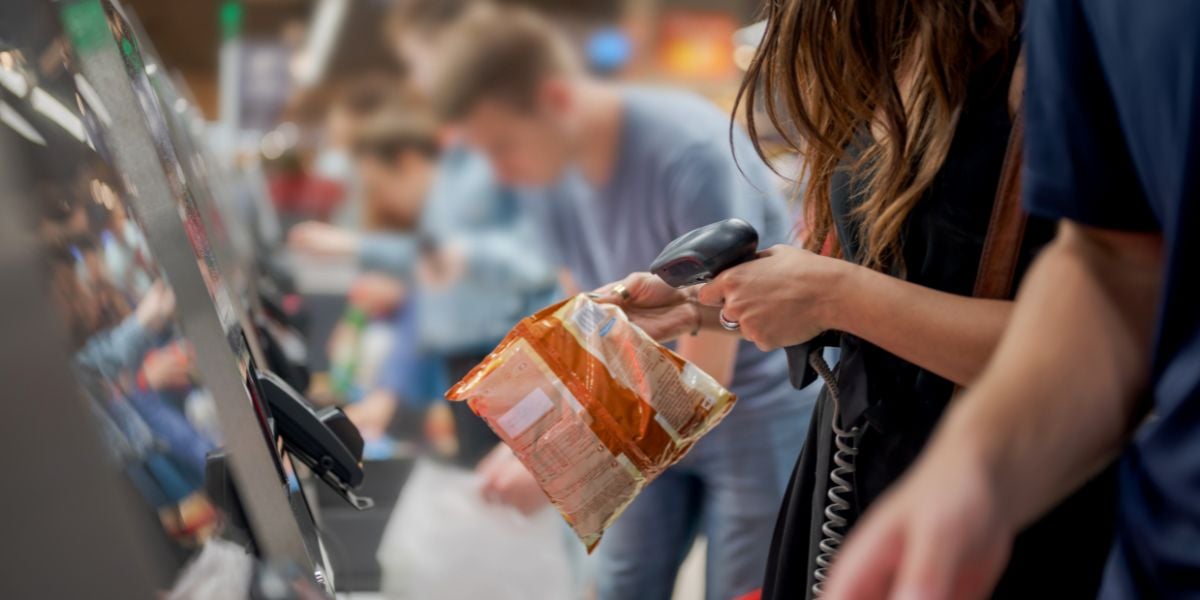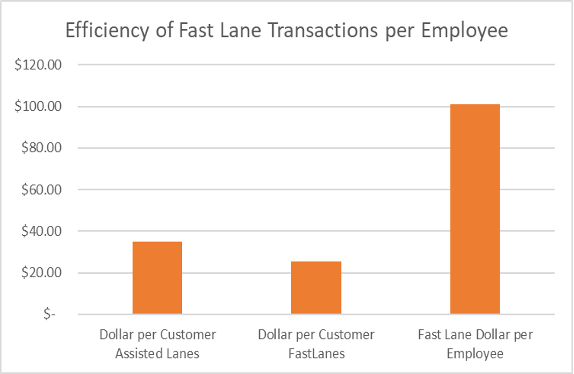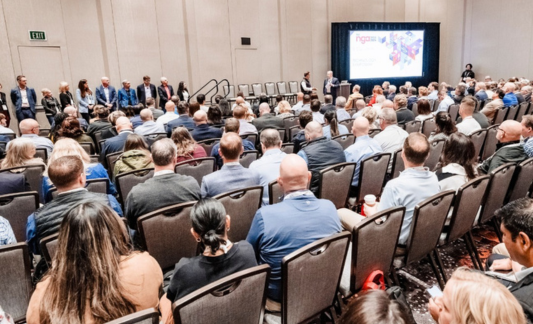Help Isom IGA recover from devasting floods

3 min read
5 Insights from Independent Grocers on Self-Checkout Technology
Written by Eric Pereira
Sep 6, 2023
Technology often improves efficiency, but at what cost? A key differentiator for independent grocers is customer service and relationships — can technology aid those differentiators? According to some retailers, it can.
Self-checkout lanes are a prime example of technology that can benefit the customer and retailer when used correctly. They can reduce labor costs and increase basket size, and even enhance the customer experience. More than half of shoppers prefer self-checkout at times, especially for smaller baskets.
And with self-checkout lanes making up nearly half of all registers and accounting for 55% of grocery transactions, this technology is dominating in popularity. While it may not be right for every independent retailer, many are considering swapping a few cashier lanes for self-checkout to reduce lines at busy times and reallocate employees to other departments.
We spoke with 2019 and 2021 IGA International Retailers of the Year (respectively) Laura Malisani and Bob Rybick, who have adopted self-checkout lanes in their stores, for their opinions and key takeaways on self-checkout lanes for independent grocers. Malisani is the co-owners of Gary & Leo's Fresh Foods IGAs, a group of three stores in Montana, and Rybick is the president and CEO of Geissler's Supermarkets, a group of seven stores in Connecticut and Massachusetts.
1. Experience Increased Efficiency & Labor Savings
Employee efficiency skyrockets with self-checkout lanes. One Geissler’s Supermarkets store has one employee covering four self-checkout lanes. While a cashiered lane averages $36 per basket and a self-checkout lane averages $25 per basket, when you consider the multiple self-checkout lanes, the efficiency and labor cost savings is four times what is seen at conventional lanes per employee.
Fewer cashiered lanes means retailers can reallocate employees to other departments.
“I may get the occasional complaint that there's not enough cashier lanes open, but I don't have the backup problem at my peak hours,” Rybick said.

Dollars per customer in cashiered lanes versus self-checkout lanes at Geissler’s Supermarkets.
2. Reduce Human Error
Thanks to the automated machine, self-checkout reduces human error by counting money and giving change automatically.
3. Choose the Right Employee
Self-checkout success depends equally on kiosks working properly and the employee managing those kiosks, as there is still a face-to-face experience with this technology.
“That person is going to touch 50% of your customers,” Malisani said. “That person has to be your No.1. This is someone who has to be good at working with a group and has energy. They need to be able to teach the customer how to use it in a way that doesn't make them feel like they're a criminal or they made a mistake, but rather, ‘Let me show you this.’”
4. Anticipate Customer Training
Customers will experience an adjustment period in the beginning. It takes nearly six months to reach a point where shoppers fully appreciate the technology. After one year, usage begins to increase again as it becomes a preferred method of completing the transaction.
The self-checkout managers are key to this customer experience, needing to be on call to assist and teach shoppers how to use the technology.
5. Manage Theft With 3 Tools
While some retailers may fear an increased risk of theft with self-checkout, Malisani and Rybick agree that you know where the theft will happen, so address it with these three tools:
- Proper surveillance
- Employee training
- Software in your lanes
Malisani and Rybick recommend using kiosks with cameras and scales to weigh the items, as these technologies will help deter theft.
Then ensure your employees understand proper surveillance. That may include an employee checking receipts at the exit (which would also address potential theft throughout the store, not just at self-checkout).
Again, the training of your self-checkout managing employee is crucial here. For example, if a customer is chatting and forgets to pay, your self-checkout employee will notice and can kindly say, ‘Oh, just a minute; let's get your receipt. Looks like it didn't go through.’ No customer wants to be embarrassed in front of the store being perceived as a thief.
“I have noticed that over time, we have gotten more lenient with the security settings in our systems to make the experience for our customer better, which means that we're probably not as worried about the shrink as when we started,” said Mack McLamb, owner of Carlie C’s IGA, a 33-store group in North and South Carolina. McLamb has installed self-checkout lanes in several of his stores and plans to incorporate them into more stores.
“The other thing is when your customers use self-checkout, they're already using it at Lowe's, Home Depot, and Walmart. And none of them really do much about stopping them at all. So, if you get stopped in your store, the customer experience seems frustrating, because you can go all these other places, and you don't get stopped.”
Taking Everything into Consideration, Is Self-Checkout Worth It?
Depending on your store, self-checkout could be a technology that betters customer service with the right implementation plan. As Malisani and Rybick shared, it has significantly improved efficiency, reduced labor costs, and enhanced customers' experiences in their stores. But for the technology to be effective, retailers must also invest in proper training, surveillance, and additional security measures.
Previous Story
← Couple Celebrates IGA Marriage 50 Years Later
Next Story
How Data Can Revitalize Your Business →
You May Also Like
These Stories on Feature Story
Dec 9, 2025 4:16:05 PM |
6 min read
Nov 19, 2025 6:04:44 PM |
5 min read
Nov 12, 2025 10:09:52 AM |
2 min read



No Comments Yet
Let us know what you think